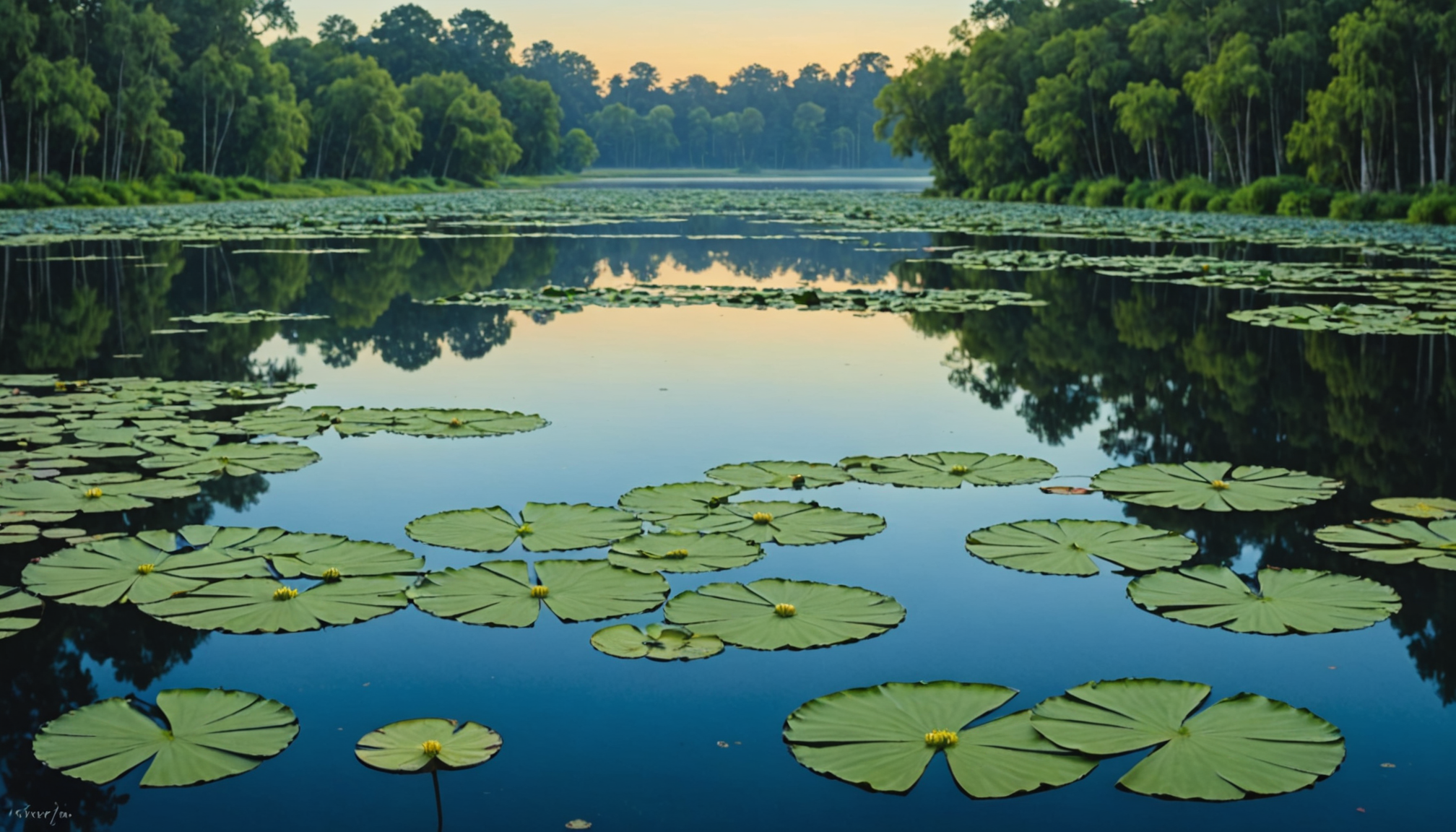Managing water quality is a crucial aspect of maintaining fountains and ponds throughout the year. Proper water quality not only enhances the aesthetic appeal of these features but also ensures the health and well-being of any wildlife residing within. To achieve high water quality, it’s essential to focus on different parameters, including pH level, dissolved oxygen, and nutrient content. Regular monitoring and adjustments are necessary to maintain a balance that supports both plant and animal life.
Maintaining the correct pH level is a fundamental component of water quality management. The ideal pH level for most ponds and fountains ranges between 6.5 and 8.5. This range is conducive to the biological processes of aquatic organisms and ensures their survival. If the pH deviates from this range, corrective measures such as the use of lime (to increase pH) or peat moss (to decrease pH) should be employed.
Dissolved oxygen (DO) levels are another critical factor. High DO levels are essential for aquatic animals and microbial life, aiding in the natural breakdown of organic material. Ensuring good aeration through devices such as fountains or aerators helps maintain these levels, particularly in the warmer months when oxygen is depleted more quickly. Regular checks should be carried out to ensure that DO levels remain above 5 mg/L to support a thriving aquatic ecosystem.
The buildup of nutrients, specifically nitrogen and phosphorus, can lead to unwanted algae growth, which diminishes water quality. It’s important to control the source of these nutrients, such as runoff from fertilized gardens or lawn clippings. Implementing buffer strips or barriers and managing feeding practices if you have fish will help reduce excessive nutrient input.
Regular water testing should be part of a routine maintenance plan. These tests allow for early detection of potential problems and provide the opportunity to make precise adjustments before issues escalate. Testing kits are available for key parameters, including pH, ammonia, nitrate, and phosphorus levels.
Having a regular maintenance schedule and using additional tools like UV filters or aquatic plants can aid in maintaining clear water. UV filters treat water and reduce algae growth, while aquatic plants such as water lilies or cattails absorb excess nutrients and provide shade, preserving water quality.
| Water Quality Parameter | Ideal Range | Corrective Measures |
| pH Level | 6.5 – 8.5 | Lime (raise pH), Peat Moss (lower pH) |
| Dissolved Oxygen | >5 mg/L | Aeration through fountains or aerators |
| Nutrients (Nitrogen and Phosphorus) | Low | Buffer strips, proper feeding practices |
Water quality management is about maintaining a delicate balance. By keeping an eye on key parameters and making necessary adjustments, you can ensure that your fountains or ponds remain healthy and attractive year-round. Ultimately, regular maintenance, proper filtration, and proactive management are integral to achieving optimal water quality.
Seasonal maintenance tips
When it comes to maintaining fountains and ponds, adjusting your maintenance routine to account for seasonal changes can make a significant difference in the longevity and performance of your water features. Each season brings unique challenges and requirements, so following a structured maintenance plan throughout the year is essential.
-
Spring
- Inspect and Clean: As the weather begins to warm, start by inspecting the pond or fountain for any damage that might have occurred over the winter. Remove any debris such as leaves or branches that may have accumulated.
- Test Water Quality: Perform a comprehensive water quality test to check for parameters such as pH, ammonia, and nitrite levels. Make necessary adjustments based on the results.
- Resume Normal Feeding: If the pond houses fish, gradually resume normal feeding once the water temperature consistently reaches above 50°F (10°C).
- Introduce Plant Life: Reintroduce aquatic plants that were removed for the winter or add new ones to help maintain water balance.
-
Summer
- Monitor Water Levels: Check water levels frequently as warm weather increases evaporation. Refill as necessary to keep the water feature at the proper level.
- Ensure Aeration and Circulation: Hot summer days can decrease oxygen levels, so ensure aeration systems are functional and not obstructed.
- Control Algae Growth: Increase algae control measures by ensuring adequate circulation and using aquatic plants to outcompete algae for nutrients.
- Maintain Filtration Systems: Clean or replace filtration components to ensure they are operating efficiently to handle increased biological activity.
-
Fall
- Prepare for Leaves: Install nets or screens over ponds to capture falling leaves and prevent them from decomposing in the water.
- Prune Aquatic Plants: Trim back dead or dying plants to prepare them for overwintering and reduce excess organic decay in the water.
- Adjust Feeding Schedule: Slowly decrease feeding as water temperatures begin to drop, eventually stopping when temperatures fall below 50°F (10°C).
- Inspect Pond Equipment: Ensure all equipment is in good condition and ready for winterization.
-
Winter
- Winterize Equipment: Drain and store any equipment that cannot withstand freezing temperatures, such as pumps not designed for cold weather.
- Maintain Open Water: Use a pond heater or aerator to maintain a small hole in the ice, ensuring gas exchange for aquatic life.
- Reduce Maintenance: With biological activity slowed, regular maintenance can be reduced. However, remain vigilant for any issues that might arise such as ice damage or stressed wildlife.
- Protect Plants and Fish: Add gentle aeration or use a pond de-icer to protect both plants and fish during extreme cold periods.
By following these seasonal maintenance tips, you not only preserve the quality and aesthetic appeal of your pond or fountain but also ensure a healthy and balanced ecosystem throughout the year.
Filtration and circulation systems
A well-designed filtration and circulation system is the heart of any thriving pond or fountain, playing a pivotal role in maintaining pristine water and a balanced ecosystem. These systems are integral for several reasons, making them an essential feature for any water installation.
Filtration systems effectively remove debris, excess nutrients, and harmful waste products from the water. A combination of mechanical and biological filters is often employed to ensure that each type works optimally. Mechanical filters capture larger particles like leaves and sediment, preventing them from decomposing and causing water quality issues. Biological filters, on the other hand, house beneficial bacteria that convert toxic ammonia and nitrites from fish waste into less harmful nitrates, thereby maintaining a safe environment for aquatic life. Regular cleaning or replacing of filter media is vital to ensure these systems function efficiently. Neglecting this maintenance can lead to clogged filters, reduced efficiency, and potential water quality problems.
Circulation is vital as it enhances oxygenation and prevents water stagnation. A pump is generally used to keep water moving, ensuring that it flows through filtration systems and back into the pond or fountain. Proper circulation not only ensures an even distribution of oxygen but also helps dissipate temperature variations, facilitating a stable environment for fish and plants. Stagnant water can quickly become depleted of oxygen and encourage the growth of unwanted microorganisms and pests. Therefore, ensuring that pumps are regularly checked for blockages and proper functioning is essential, particularly during peak biological activity in warmer months.
Moreover, circulation systems can be enhanced through the strategic placement of waterfalls, fountains, and other water features. These not only serve an aesthetic purpose but also contribute to increased aeration and water movement, benefiting the overall health of the pond or fountain. Important to note is the sizing of your pump and filtration system. They should be appropriately matched to the volume of water in your feature. Undersized systems will struggle to maintain water quality, while oversized ones can lead to unnecessary energy consumption.
Incorporating advanced tech such as variable-speed pumps and smart controllers can further optimize these systems. These devices allow for tailored operation schedules that adjust to seasonal variations and water demands, promoting energy efficiency while maintaining peak performance.
In summary, by investing in a robust filtration and circulation system and committing to its regular upkeep, you not only enhance the longevity and aesthetic of your water features but also foster a healthy environment for aquatic life to thrive. Proper filtration and circulation are non-negotiable cornerstones of effective water feature maintenance, integral to delivering both visual pleasure and ecological balance year-round.
Dealing with algae and pests
Algae and pests are common nuisances in maintaining fountains and ponds, but with proactive measures, they can be effectively managed, ensuring the longevity and beauty of your water features. Algae, while a natural part of aquatic ecosystems, can quickly become overgrown, leading to murky water, clogged filters, and suffocation of aquatic life due to reduced oxygen levels. Pests such as mosquitoes and certain invasive species pose additional challenges, often disturbing the balance of your pond or fountain.
To manage algae growth, start with prevention by maintaining a healthy balance of nutrients in the water. Algae thrive on excess nutrients, particularly nitrogen and phosphorus, which can originate from over-fertilized gardens, fish food residues, or decaying plant matter. Implement strategies like nutrient control by using fertilizer with slow-release formulas away from your water features and avoiding overfeeding fish. Encourage competition with algae by cultivating aquatic plants such as water lilies and submerged plants, which absorb the same nutrients and mitigate sunlight penetration, thus inhibiting algae growth.
Regular cleaning routines are beneficial. Physical removal of algae, like string algae, with nets or specialized brushes can temporarily reduce accumulation. However, for long-lasting results, incorporate biological control options such as beneficial bacteria or barley straw, which naturally decompose organic material and hinder algae formation. For ponds with high algae challenges, consider installing UV sterilizers that expose algae to ultraviolet light, effectively controlling the population by disrupting their cellular structure without harming fish or plants.
Pests like mosquitoes are best managed by ensuring effective water circulation and aeration. Stagnant water is a breeding ground for mosquitoes; thus, continuous water movement from fountains or waterfalls prevents larvae from establishing themselves. Introduce natural predators such as mosquito fish (Gambusia affinis), which consume larvae and can efficiently regulate mosquito populations without disturbing the existing ecosystem balance.
For ponds susceptible to invasive pests like frogs, crayfish, or unwanted fish species, it’s crucial to maintain a vigilant eye on these potential intruders. For example, barriers like pond nets can help keep predatory birds, who might disrupt aquatic balance, at bay. Periodical inspection and community engagement with local aquatic specialists can provide insights into managing unexpected pests effectively.
Chemical interventions should be the last resort due to potential harm to beneficial aquatic life. When necessary, select environmentally friendly algaecides or pest control treatments that are biodegradable and specifically formulated for aquatic environments. Always adhere to usage guidelines to prevent adverse effects.
Remember, managing algae and pests is a continuous process rather than a one-time fix. By implementing a combination of preventative measures and ongoing maintenance, you can effectively manage these challenges, fostering a thriving and visually appealing aquatic environment. This proactive approach ensures not only the aesthetic pleasure of clear waters but also supports a robust ecosystem in your fountains and ponds.
Winterizing your water features
Winter brings unique challenges to fountains and ponds, and preparing your water features for the cold months is essential to protect them from the harsh conditions. Start by addressing any necessary repairs or inspections before temperatures drop, ensuring that your equipment will withstand the season.
Drain and store any components susceptible to freezing, such as exposed pumps, not designed to operate in cold weather. For submerged pumps, verify their compatibility with freezing conditions and consider using a pond de-icer or aerator to prevent ice from forming over the water’s surface. These devices maintain an open area in the ice, facilitating essential gas exchange and preventing potentially harmful buildup underneath the ice.
Water plants require special attention during winter months. Remove and store delicate specimens like tropical lilies in warmer environments indoors or in a greenhouse if temperatures drop consistently below their tolerance. Hardy plants can remain in place, though it’s beneficial to trim dead foliage that could decompose and toxify the water.
Fish also need consideration during the colder months. Ensure any necessary adjustments to their diet as they enter a dormant state, naturally reducing food intake. Keeping a close watch on water conditions is vital to their winter survival. Regular checks with minimal disturbance help avoid stressing the aquatic life.
Additionally, cover surfaces with protective netting to prevent debris accumulation from winter winds, ensuring easier cleanup come spring. Insulating equipment like pumps can further protect them from unexpected cold snaps and extend their operational efficiency, saving on future repair costs.
Thorough winter preparation is crucial in preventing costly damage and ensuring your fountain or pond is ready to thrive once warmer weather returns. By taking these proactive steps, you safeguard the health of your aquatic ecosystem and maintain the aesthetic appeal of your water features year-round.
Successfully maintaining fountains and ponds throughout the year hinges on attentive water quality management, tailored seasonal care, diligent filtration and circulation, and effective control of algae and pests. Through careful preparation and ongoing maintenance, not only do these features add beauty to your landscape, but they also support a balanced and thriving aquatic environment, enriching your outdoor space and providing enjoyment in every season.


